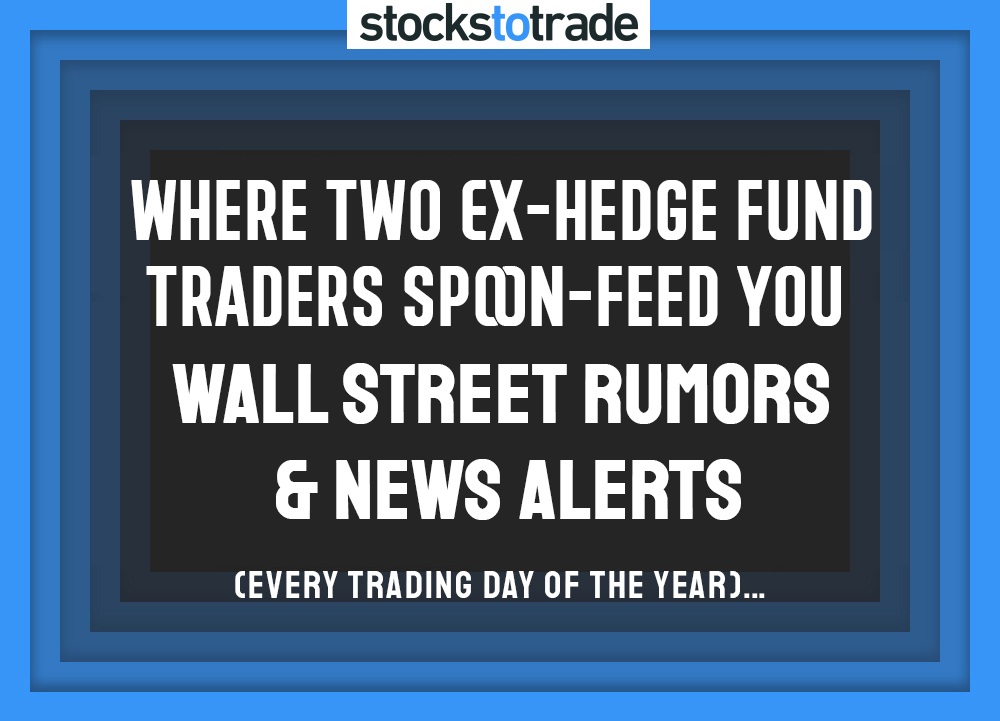- Prices surge for food, gas, commodities, homes, stocks…
- Fed downplays inflation concerns as ‘transitory’…
- Big investors warn the Central Bank is getting it wrong…
“Sell in May and go away” — it’s officially the ominous month of May on Wall Street and the current bull market is facing several threats to its pandemic-era rally.
High on that list of threats is inflation as the economy continues to reopen. And although the Federal Reserve says it’s nothing to be worried about, recent data tells a different story.
Table of Contents
What Is Inflation?
Inflation is the rate of difference between the falling value of a currency — the U.S. dollar — and rising prices for goods and services.
As the price of something rises the dollar becomes less powerful.
Let’s say a gallon of milk cost $1.25 at the start of 2020 but now that same gallon of milk costs $2.00 in 2021. That’s an appreciation rate of 1.6% over 12 months.
That annual change in prices is how the government measures inflation pressures in the U.S. economy.
Standard Measurement of Inflation
The U.S. government has two main price indexes to measure annual inflation — the consumer price index (CPI) from the Labor Department and the personal consumption expenditures (PCE) price index from the Bureau of Economic Analysis.
Each of those indexes is reported monthly and includes two different numbers.
The headline rate measures overall inflation for all goods and services, while the core rate measures inflation excluding food and energy prices.
How those indexes are used depends on which government entity we are discussing.
 The CPI is used by the federal government to adjust benefits like Social Security for inflation.
The CPI is used by the federal government to adjust benefits like Social Security for inflation.
The Federal Reserve relied on CPI prior to the year 2000 but then shifted to PCE. St. Louis Fed President James Bullard explains the reasons for that decision:
“The expenditure weights in the PCE can change as people substitute away from some goods and services toward others, the PCE includes more comprehensive coverage of goods and services, and historical PCE data can be revised (more than for seasonal factors only).”
Further, the Federal Open Market Committee (FOMC) uses the core PCE price index to measure inflation pressures. The Central Bank operates with a target rate of 2% for annual inflation and uses interest rates to control those pressures.
Before 2020, inflation pressures were running well below the Fed’s target. In December of 2019, the core PCE index rose 1.6% year-over-year.
In early 2020, inflation was still muted. The core PCE index rose 1.7% annually in January, 1.8% year-over-year in February, and 1.7% in March.
Pandemic Causes Sharp Drop In Inflation

Image credit: Corona Borealis Studio/Shutterstock.com
As consumer activity came to a screeching halt in the spring of 2020, so did inflation pressures.
In April of 2020, the core PCE index fell 0.5% from March and rose just 0.9% year-over-year.
And the Federal Reserve wasn’t making decisions based on inflation at this point. The Fed held an emergency meeting in mid-March and cut base interest rates to near zero to support the economy amid an impending collapse.
The U.S. labor market quickly crumbled due to the pandemic, with the unemployment rate rising to a record 14.7% in April 2020 as more than 23 million Americans filed for benefits.
Throughout 2020, the Central Bank launched several programs to support the economy.
To this day, interest rates remain at a range of 0% to 0.25% with the bank planning to maintain those rates through 2023.
The Fed is also continuing to purchase $120 billion of Treasury and mortgage-backed securities per month to push more cash into the U.S. economy.
In addition to the Fed’s efforts to push cash into the economy, Congress has approved six stimulus packages which included three rounds of direct checks sent to Americans.
But that cash flood could make inflation worse.
Fed Continues to Downplay Inflation Concern
The current PCE index shows core inflation of 1.8% while the headline rate stands at 2.3% — above the Fed’s target.
But remember, the Fed focuses on the core rate.
The Central Bank altered its monetary policy in August 2020, vowing to prioritize recovery in the labor market over inflation. The Fed said it will allow inflation to run moderately above its 2% target for some time to make up for the low inflation seen in 2020.
The goal of that policy shift is to achieve a longer-run inflation rate of 2% when averaging out the low inflation in 2020 and higher inflation in subsequent years.
In its current statement, the FOMC says, “Inflation has risen, largely reflecting transitory factors.”
The Bank uses the word transitory to mean current inflation pressures are temporary. You may have also heard the term “base effect” to describe the current uptick in inflation.
The base effect refers to the large difference between unusually low inflation in the same month in 2020 to apparent higher inflation this year.
The Federal Reserve’s most recent economic projection shows inflation rising to 2.4% by the end of 2021, 2.0% in 2022, and 2.1% in 2023. That would create a longer-run inflation rate of 2.0%.
But economists are beginning to sound the alarm as commodity prices, grocery prices, home prices, and even stock prices continue to surge.
Is the Fed Getting It Wrong?

Image credit: Paul Brady Photography/Shutterstock.com
The core PCE index excludes the very things where most Americans notice the biggest price changes — food and energy. Who cares if you can buy a big-screen TV for cheap if you can’t afford to feed your family.
Noticed a big increase in your grocery bill over the last year? So has everyone else.
The latest CPI from the Labor Department shows a 3.5% year-over-year change in food prices. Broken down between groceries and eating out, food at home rose 3.3% annually in March while food away from home was up 3.7%.
Noticed an even bigger increase in your gas bill? It shows in the data.
Overall energy prices rose 13.2% in March compared to March of 2020 and gasoline prices surged 22.5%.
It’s not just food and energy prices that are rising at a rapid rate.
The U.S. housing market has been on fire amid the pandemic as people move out of big cities.
But the market is facing a severe supply shortage, pushing prices higher and higher. New homes can’t seem to be built fast enough to fill that shortage and builders are struggling with out-of-control material costs.
The National Association of Home Builders says the average cost of a new single-family home has gone up by $36,000 in the last year as lumber prices have jumped nearly 250% since April of 2020.
As demand for everything returns to normal, supply isn’t keeping up. Let’s take a look at corn.
The continuous futures contract for corn ended April at $6.73 per bushel. That’s up more than 111% compared to 2020.
Rising commodity prices have prompted several companies to warn about price hikes later this year.
In their most recent earnings calls, Procter & Gamble, Kimberly-Clark, and Coca-Cola all warned about higher prices in the second half of 2021.
Pent-up Demand Could Make It Worse
Consumer activity ground to a halt in 2020, with Americans purchasing only the essentials as many lost their jobs and stayed home.
In March 2021, the personal savings rate rose to 27.6% as the government sent out its third round of stimulus checks.
Americans are estimated to have about $2 trillion in excess savings which is expected to help boost GDP as the economy continues to reopen.
But we’re already seeing a shortage of supply now and there’s still a long way to go for demand to fully recover — especially in the services sector — which means prices are only going to go up more.
The supply shortages we’re already seeing will only be exacerbated by a continued increase in demand as more sectors of the economy fully reopen.
Wall Street Sounds the Alarm
Billionaire investor Leon Cooperman recently told CNBC, “The market is facing the fact that taxes are going up, interest rates are going up, and inflation is going up… And I suspect the market will be lower a year from today.”
In that same interview, Cooperman said he thinks the Fed is missing the mark on inflation.
“I think that Mr. Powell will be surprised by inflation. It’s not going to be as quiescent and transitory as he thinks. I think the Fed will be forced to say something before the end of 2022.”
And Cooperman isn’t the only one who feels that way.
The “Big Short” investor Michael Burry was warning about inflation back in February.
In a now-deleted tweet on the evening of February 18, Burry said, “Prepare for #inflation. Re-opening & stimulus on the way. Pre-COVID it took $3 debt to create $1 GDP, and it is worse now. In an inflationary crisis, governments will move to squash competitors in the currency arena. $BTC #gold.”
There’s no denying the pandemic has caused U.S. government debt to surge out of control. The federal deficit a record-high $1.706 trillion in the first 6 months of the 2021 fiscal year as Congress pumped out more stimulus.
Burry also compared the current inflationary outlook in the U.S. to Germany’s path to hyperinflation in the 1920s.
In another now-deleted tweet, he said, “Germany [the US] started by not paying adequately for its war [on COVID and the GFC fallout] out of the sacrifices of its people – taxes – but covered its deficits with war loans [Treasuries] and issues of new paper Reichsmarks [dollars]. ‘ #doomedtorepeat.”
How Will a Fed Decision Impact Stocks?
In his latest press conference, Fed Chair Jerome Powell said, “We are committed to using our full range of tools to support the economy and to help assure that the recovery from this difficult period will be as robust as possible.”
What is the Fed’s main tool to control inflation? Interest rates.
If the bank is forced to hike rates, the impact will be felt on the stock market.
Historically, interest rates and stocks have an inverse relationship. Traders saw the high side of that relationship in 2020 as the market surged when the Central Bank slashed rates.
But if you’re still new to trading you probably haven’t experienced the flip side of that relationship.
In the April 4 edition of his weekly note to investors, Christopher Wood — global head of equity strategy at Jefferies — warned about surging inflation as demand ramps up this year.
“The result is that investors should be prepared for the biggest inflation scare in America on the reopening of the economy since the early 1980s when former Fed Chairman Paul Volcker crushed double digit inflation in the late 1970s by imposing high real interest rates on the American economy.”
If inflation pressures balloon past the Fed’s forecast, a rate hike may become unavoidable and a drop on Wall Street is likely to follow.
Wondering what else is threatening the current bull run? Check out this post on the StocksToTrade blog.

